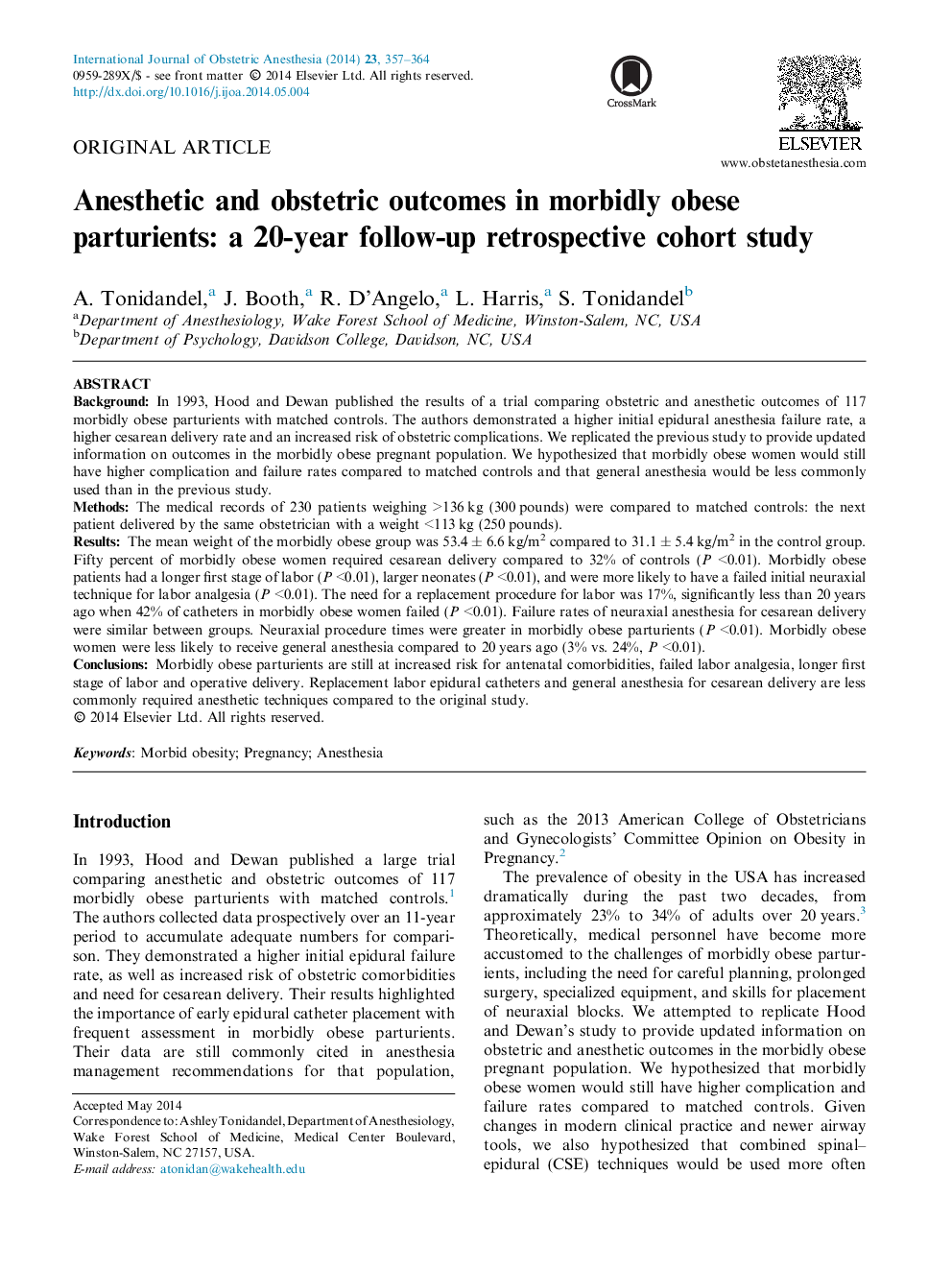| Article ID | Journal | Published Year | Pages | File Type |
|---|---|---|---|---|
| 2757697 | International Journal of Obstetric Anesthesia | 2014 | 8 Pages |
•This study replicated a previous study published in 1993.•Pregnant patients weighing more than 300 pounds are much more common now.•The average weight for the matched control patients would now be classified as obese.•Cesarean delivery and failed labor analgesia still occurs more often in morbid obesity.•Replacement epidurals and general anesthesia are needed less than in the 1993 study.
BackgroundIn 1993, Hood and Dewan published the results of a trial comparing obstetric and anesthetic outcomes of 117 morbidly obese parturients with matched controls. The authors demonstrated a higher initial epidural anesthesia failure rate, a higher cesarean delivery rate and an increased risk of obstetric complications. We replicated the previous study to provide updated information on outcomes in the morbidly obese pregnant population. We hypothesized that morbidly obese women would still have higher complication and failure rates compared to matched controls and that general anesthesia would be less commonly used than in the previous study.MethodsThe medical records of 230 patients weighing >136 kg (300 pounds) were compared to matched controls: the next patient delivered by the same obstetrician with a weight <113 kg (250 pounds).ResultsThe mean weight of the morbidly obese group was 53.4 ± 6.6 kg/m2 compared to 31.1 ± 5.4 kg/m2 in the control group. Fifty percent of morbidly obese women required cesarean delivery compared to 32% of controls (P <0.01). Morbidly obese patients had a longer first stage of labor (P <0.01), larger neonates (P <0.01), and were more likely to have a failed initial neuraxial technique for labor analgesia (P <0.01). The need for a replacement procedure for labor was 17%, significantly less than 20 years ago when 42% of catheters in morbidly obese women failed (P <0.01). Failure rates of neuraxial anesthesia for cesarean delivery were similar between groups. Neuraxial procedure times were greater in morbidly obese parturients (P <0.01). Morbidly obese women were less likely to receive general anesthesia compared to 20 years ago (3% vs. 24%, P <0.01).ConclusionsMorbidly obese parturients are still at increased risk for antenatal comorbidities, failed labor analgesia, longer first stage of labor and operative delivery. Replacement labor epidural catheters and general anesthesia for cesarean delivery are less commonly required anesthetic techniques compared to the original study.
